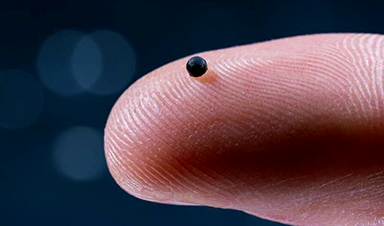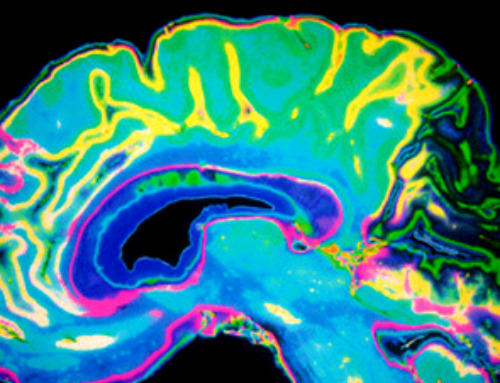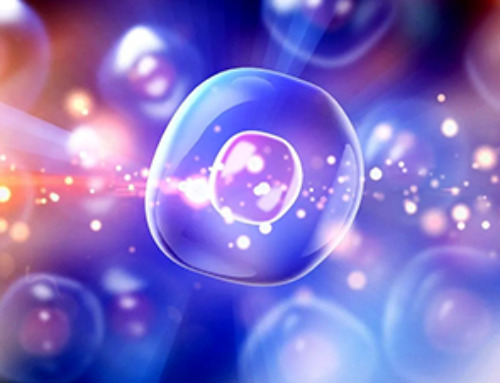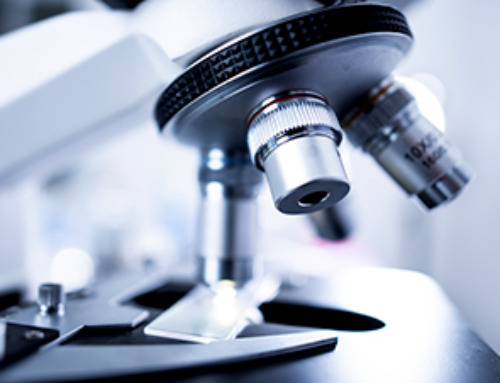A research team at RCSI University of Medicine and Health Sciences has developed a 3-D printed implant to deliver electrical stimulation to injured areas of the spinal cord, offering a potential new route to repair nerve damage.
Details of the 3-D printed implant and how it performs in lab experiments have been published in the journal Advanced Science.
Spinal cord injury is a life-altering condition that can lead to paralysis, loss of sensation and chronic pain. In Ireland, more than 2,300 individuals and families are living with spinal cord injury, but no treatment currently exists to effectively repair the damage. However, therapeutic electrical stimulation at the injury site has shown potential in encouraging nerve cells (neurons) to regrow.
Promoting the regrowth of neurons after spinal cord injury has been historically difficult however our group is developing electrically conductive biomaterials that could channel electrical stimulation across the injury, helping the body to repair the damaged tissue. The unique environment provided by the AMBER Centre which sees biomedical engineers, biologists and material scientists working together to solve grand societal challenges provides a major opportunity for disruptive innovation such as this”.
Professor Fergal O’Brien, Deputy Vice Chancellor for Research and Innovation and Professor of Bioengineering and Regenerative Medicine at RCSI and Head of RCSI’s Tissue Engineering Research Group (TERG)
The study was led by researchers at RCSI’s TERG and the Research Ireland Centre Advanced Materials and Bioengineering Research (AMBER). The team used ultra-thin nanomaterials from Professor Valeria Nicolosi’s laboratory in the School of Chemistry and AMBER at Trinity College Dublin which are normally used for applications like battery design and integrated them into a soft gel-like structure using 3-D printing techniques.
The resulting implant mimics the structure of the human spinal cord and features a fine mesh of tiny fibres that can conduct electricity to our cells. When tested in the lab, the implant was shown to effectively deliver electrical signals to neurons and stem cells, enhancing their ability to grow.
Modifying the fibre layout within the implant was also found to further improve its effectiveness.
“These 3D-printed materials allow us to tune the delivery of electrical stimulation to control regrowth and may enable a new generation of medical devices for traumatic spinal cord injuries” said Dr Ian Woods, Research Fellow at TERG and first author of the study. “Beyond spinal repair, this technology also has potential for applications in cardiac, orthopaedic and neurological treatments where electrical signalling can drive healing.”
The RCSI and AMBER researchers teamed up with the Irish Rugby Football Union Charitable Trust (IRFU-CT) on the project and brought together an advisory panel to oversee and guide the research. The group included seriously injured rugby players, clinicians, neuroscientists and researchers.
“Through their expertise, the advisory panel helped deepen our understanding of the lived experiences of individuals with spinal cord injuries, their treatment priorities and emerging treatment approaches” said Dr Woods. “Our regular meetings allowed for a consistent exchange of input, ideas and results.”
The study was supported by the Irish Rugby Football Union Charitable Trust, AMBER the Research Ireland Centre for Advanced Materials and BioEngineering Research and an Irish Research Council Government of Ireland Postdoctoral Fellowship.
Woods, I., et al. (2025). 3D‐Printing of Electroconductive MXene‐Based Micro‐Meshes in a Biomimetic Hyaluronic Acid‐Based Scaffold Directs and Enhances Electrical Stimulation for Neural Repair Applications. Advanced Science. doi.org/10.1002/advs.202503454.
News
A single shot of HPV vaccine may be enough to fight cervical cancer, study finds
WASHINGTON -- A single HPV vaccination appears just as effective as two doses at preventing the viral infection that causes cervical cancer, researchers reported Wednesday. HPV, or human papillomavirus, is very common and spread [...]
New technique overcomes technological barrier in 3D brain imaging
Scientists at the Swiss Light Source SLS have succeeded in mapping a piece of brain tissue in 3D at unprecedented resolution using X-rays, non-destructively. The breakthrough overcomes a long-standing technological barrier that had limited [...]
Scientists Uncover Hidden Blood Pattern in Long COVID
Researchers found persistent microclot and NET structures in Long COVID blood that may explain long-lasting symptoms. Researchers examining Long COVID have identified a structural connection between circulating microclots and neutrophil extracellular traps (NETs). The [...]
This Cellular Trick Helps Cancer Spread, but Could Also Stop It
Groups of normal cbiells can sense far into their surroundings, helping explain cancer cell migration. Understanding this ability could lead to new ways to limit tumor spread. The tale of the princess and the [...]
New mRNA therapy targets drug-resistant pneumonia
Bacteria that multiply on surfaces are a major headache in health care when they gain a foothold on, for example, implants or in catheters. Researchers at Chalmers University of Technology in Sweden have found [...]
Current Heart Health Guidelines Are Failing To Catch a Deadly Genetic Killer
New research reveals that standard screening misses most people with a common inherited cholesterol disorder. A Mayo Clinic study reports that current genetic screening guidelines overlook most people who have familial hypercholesterolemia, an inherited disorder that [...]
Scientists Identify the Evolutionary “Purpose” of Consciousness
Summary: Researchers at Ruhr University Bochum explore why consciousness evolved and why different species developed it in distinct ways. By comparing humans with birds, they show that complex awareness may arise through different neural architectures yet [...]
Novel mRNA therapy curbs antibiotic-resistant infections in preclinical lung models
Researchers at the Icahn School of Medicine at Mount Sinai and collaborators have reported early success with a novel mRNA-based therapy designed to combat antibiotic-resistant bacteria. The findings, published in Nature Biotechnology, show that in [...]
New skin-permeable polymer delivers insulin without needles
A breakthrough zwitterionic polymer slips through the skin’s toughest barriers, carrying insulin deep into tissue and normalizing blood sugar, offering patients a painless alternative to daily injections. A recent study published in the journal Nature examines [...]
Multifunctional Nanogels: A Breakthrough in Antibacterial Strategies
Antibiotic resistance is a growing concern - from human health to crop survival. A new study successfully uses nanogels to target and almost entirely inhibit the bacteria P. Aeruginosa. Recently published in Angewandte Chemie, the study [...]
Nanoflowers rejuvenate old and damaged human cells by replacing their mitochondria
Biomedical researchers at Texas A&M University may have discovered a way to stop or even reverse the decline of cellular energy production—a finding that could have revolutionary effects across medicine. Dr. Akhilesh K. Gaharwar [...]
The Stunning New Push to Protect the Invisible 99% of Life
Scientists worldwide have joined forces to build the first-ever roadmap for conserving Earth’s vast invisible majority—microbes. Their new IUCN Specialist Group reframes conservation by elevating microbial life to the same urgency as plants and [...]
Scientists Find a Way to Help the Brain Clear Alzheimer’s Plaques Naturally
Scientists have discovered that the brain may have a built-in way to fight Alzheimer’s. By activating a protein called Sox9, researchers were able to switch on star-shaped brain cells known as astrocytes and turn them into [...]
Vision can be rebooted in adults with amblyopia, study suggests
Temporarily anesthetizing the retina briefly reverts the activity of the visual system to that observed in early development and enables growth of responses to the amblyopic eye, new research shows. In the common vision [...]
Ultrasound-activated Nanoparticles Kill Liver Cancer and Activate Immune System
A new ultrasound-guided nanotherapy wipes out liver tumors while training the immune system to keep them from coming back. The study, published in Nano Today, introduces a biodegradable nanoparticle system that combines sonodynamic therapy and cell [...]
Magnetic nanoparticles that successfully navigate complex blood vessels may be ready for clinical trials
Every year, 12 million people worldwide suffer a stroke; many die or are permanently impaired. Currently, drugs are administered to dissolve the thrombus that blocks the blood vessel. These drugs spread throughout the entire [...]





















